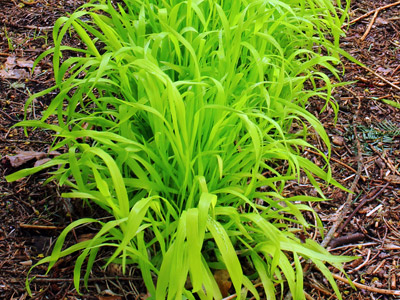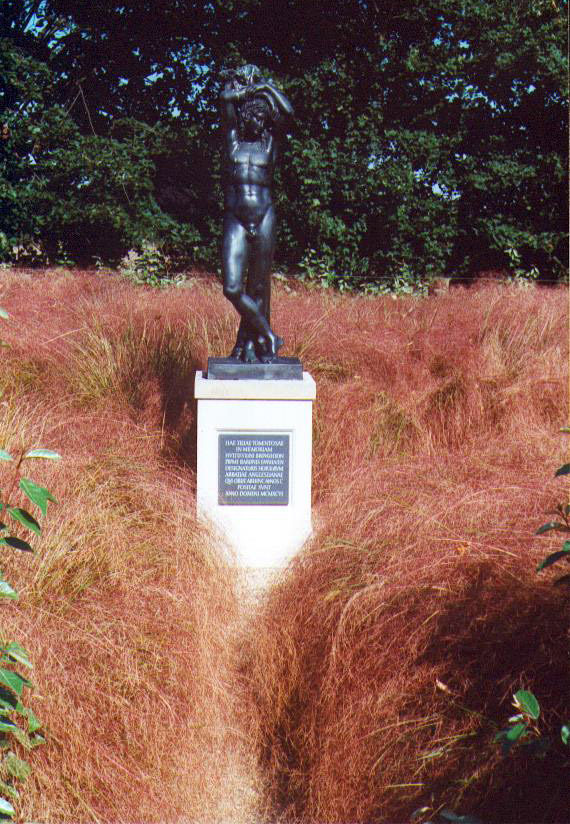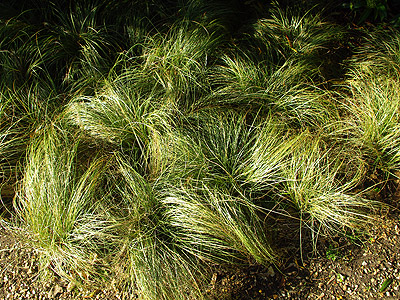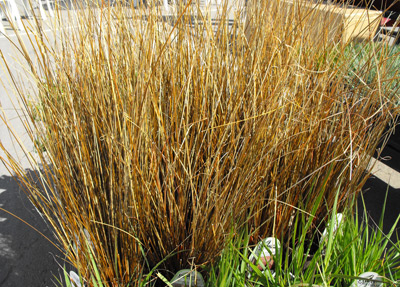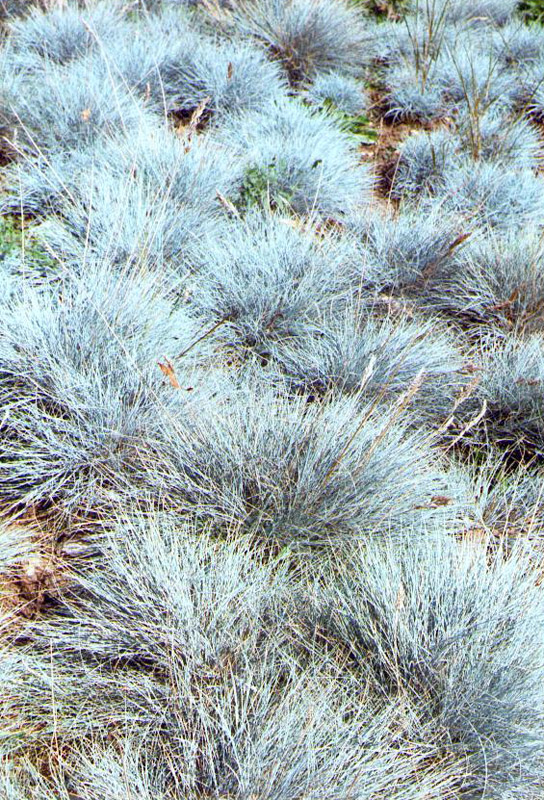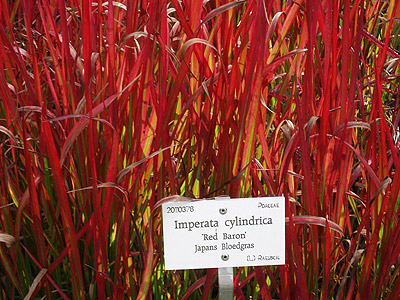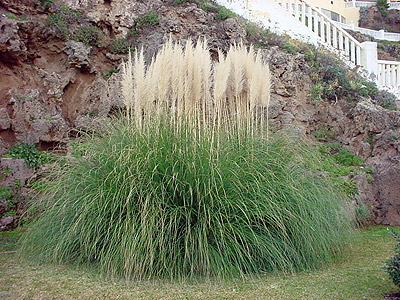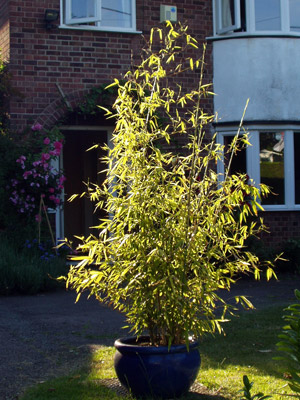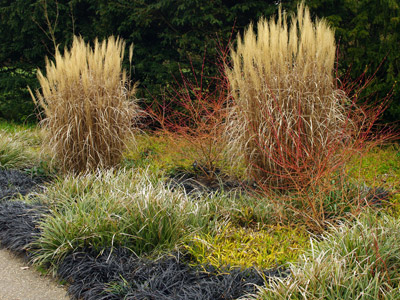
Ornamental Grasses
There are plenty of reasons to have grasses in your garden
-
Grasses have a subtle beauty, their flowers are wind-pollinated and therefore not bright and showy, but feathery and delicate and usually very much in keeping with the rest of the plant rather than being a brightly coloured button of a flower stuck on leaves of a totally different shape.
-
Grasses animate the garden with movement and often with sound. The slightest breeze will set their slender leaves and drooping flower heads into motion and cause gentle rustling sounds.
-
The shapes and colours of their leaves give a excellent contrast to other features in the garden, to broad-leaved plants and their showy flowers or to the materials and textures of wood, stone, gravel, ceramics etc. that we may have in the garden.
These featured plants are recommended as they are reliable in most soils in most regions and are widely available, there are also many other beautiful and worthy grasses to try.
Milium Effusum 'Aureum' - Bowles Golden Sedge / Grass
A richly coloured yellow sedge for moist or wet soil in sun or partial shade. Beautifully coloured long soft leaves with long flower spikes of the same colour rising above in late spring / early summer.
They become more yellow in full sun and later in the season produce tall feathery seed heads.
Anemanthele
lessoniana
- Pheasant's tail grass
(Stipa arundinacea)
An excellent medium sized grass and one of the best. Evergreen leaves 12in long streaked orange-brown in summer, turns orange-brown all over in winter, drooping flower panicles to 30in, spread up to 4ft. Tolerant of shade, but plant in sun for best colour. Can be short lived (3-4 years) self seed but not extensively, good for the informal garden.
Picture shows a mass planting of Stipa arundinacea around a feature statue at Anglesey Abbey Cambridgeshire.
Stipa tenuissima - "Pony Tails"
Upright tufted grass, bright green to 12in with flower spikes of twice this that look like newly washed hair apparently (maybe if you have green flowing locks it does). A lovely vivid green grass with soft feathery flower plumes arching above the leaves that billow in the slightest breeze.
Carex - sedges
Many Carex species are bog plants
so can be planted in pond margins or damp soil.
Carex buchananii - red fox sedgehas
brown / orange leaves growing up like a fire-work
coming out of the ground to about 18" and then tapering
away to an indefinite curly tip. Tolerates the wettest
of soils. On the one hand it is very uninspiring, though
in situ contrasted against green leaves, gravel or boulders
it works surprisingly well.
Festuca glauca - Blue fescue
Glaucous blue-green leaves, forms clumps about 8in high, long flower spikes in late spring and early summer, plant in bright sun for best colour, look especially good planted in groups of least 3. Several named varieties available, "Elijah blue", and "Blaufuchs" syn. "Blue fox" amongst the best. Can be grown from seed with varied results, you need to pick out the blue-leaved seedlings and discard the rest which will be standard green. The better cultivars are available to buy as plants when they can be readily propagated by division.
Also good in pots and containers where it can be a permanent resident amongst spring or summer flowering bulbs or bedding.
Imperata cylindrica "Rubra" - Japanese blood grass
Well behaved, slowly spreading grass with very striking foliage even if it isn't every-ones cup of tea. Mid green leaves to about 20in long that turn red from the tips downwards almost as far as the bases. Short flower panicles are produced in the late summer.
Miscanthus sinensis
Large noble grasses and impressive with it. Available as many different named hybrids, many good ones, particularly "Siberfeder" syn. silver feather and "Cosmopolitan", "zebrinus" is a horizontally striped version with yellow bands on mid green leaves. Grow alone or as a part of a border. Flower panicles from 4ft to 9ft long, good for floral art (or hitting friends / siblings - depending on age).
Cortaderia selloana - Pampas grass
Pampas grass is a large plant 6ft tall by about the same wide with flower panicles to 10ft. It is often planted inappropriately, put it in the middle of a small lawn and it will look completely overwhelming.
Can be well planted at the margins of a garden or at the back of a large mixed border unless you have great expanses of lawn. If possible plant so that the sun sets behind it when viewed from your house or usual garden viewing place and you could well come to love it. A very resilient and an easy plant to grow, it can also thrive in difficult areas where its natural vigour will allow it to survive while the difficult conditions will keep it smaller than normal size (with less flower panicles).
Buy Pampas grassBamboos
A large and varied group of graceful grasses which contrary to popular belief are usually hardy and not invasive. They are generally fairly slow growing, the length of the stems being related to the extent of the root system. So if your young plant doesn't produce 8ft high canes immediately, give it a chance to establish. They produce longer canes as they age.
Bamboos are evergreens and not affected by any major pest or disease in this country (watch out for panda's looking for emerging shoots though). They aren't keen on exposed windy conditions which can make them look tatty and threadbare, they don't like very dry conditions and won't really withstand being baked by the sun with little moisture available.
Arundinaria nitida - Fountain Bamboo, is handsome with dark purple-green canes and dark green leaves, to 15ft high by 5ft wide. Arundinaria murieliae - Umbrella Bamboo is similar but umbrella-shaped (surprise). Yellow-green canes at first turning yellow with age. Phyllostachys nigra - Black bamboo is particularly striking has canes that start green but then turn black in the second or third year 10-15ft high by 6ft wide.
Not cheap plants especially if you buy large specimens but fairly easily propagated by division when grown in containers, keep moving them on to bigger and bigger pots.
Growing tips and care
-
Most grasses prefer a sunny position, coloured varieties produce their best colours in full sun, if too shady, they will revert to a mid-green colour.
-
Once established, grasses tend to be trouble free. prepare the soil with organic matter before planting and look after them through the first summer. Thereafter they will need little care other than weeding.
-
Cut down deciduous grasses in February (these are the ones that turn brown over the winter), this will encourage them to put on a spurt of growth come spring. New growth doesn't look so good when growing through last years old dead leaves.
-
Evergreen grasses shouldn't be cut back drastically as they can take a while to recover. In spring old tatty leaves with damaged split ends can be trimmed back or removed to tidy the plant up. Also, remove old flowering spikes as they bend or fall over to make way for new.
-
Many grasses will self-seed, these tend to be relatively short-lived ones which considerately replace themselves for you. Wait until early summer to see what you have when you can pull up the excess plants (pot them up and move elsewhere or give away) and leave the ones where you want them.
Propagation
Grasses are generally straightforward to propagate, many can be propagated from seed and almost all can be propagated by division. If you want to make a display of a large number of grasses, such as in the pictures above of of Stipa arundinacea or Festuca ovina glauca and others on this page, this gives you a way to do it without breaking the bank.
Seed;
-
Stipa arundinacea
-
Festuca ovina glauca
-
Stipa tenuissima
-
Miscanthus sinensis hybrids (though not named varieties)
-
Carex elata "Aurea"
Seed of some coloured leaved varieties such as Festuca ovina glauca will yield a mix of plants of various depths of colouration, to select the best, prick seedlings out into seed trays, about 15 in each to allow them to grow on and show their colour, then be fairly ruthless about discarding the greener individuals to get the brighest plants.
Division;
Of almost all types is successful. Dig them up when actively growing in spring or early summer and pull carefully apart (this might require some significant effort). They will separate at the naturally weakest region to give two plants with decent root systems, try to pull as far as you can rather than cut them. These can then be planted straight away.
If you wish to build up stocks from container grown plants, then split the plant when the roots fill the pot, with one plant seperating into 3 or 4 offspring, and re-pot, place them in a sunny position and make sure you water them well not forgetting a liquid feed. This can be repeated as many times as necessary, eventually place them in 2L pots and then plant them in the ground when they fill these. This will give you the quickest way to a good sized display of good sized plants.
Picture credits: Milium effusum 'Aureum' - Dominicus Johannes Bergsma - Creative Commons Share and Share Alike Attribution 3.0 Unported license | Japanese bloodgrass - Queeste - Creative Commons Share and Share Alike Attribution 3.0 Unported license
Copyright 2000 - present. All Rights Reserved | Privacy Policy Statement

